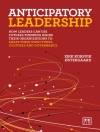Historical context, theoretical grounding, critical issues perspective, and the ‘how-to’ for community development
This collection of work by leading community development scholars presents students with a theoretical and practical introduction to the field. The text progresses seamlessly from a theoretical overview to a historical overview to three approaches to community development (ecological, interactional, and structural-functional), then explores the practice of community development along with technical assistance, action research, evaluation research, and the role of local organizations, local leadership, and coalitions. The book concludes with critical issues, such as rural development, inner-city development, youth in community development, health care, public schools, and sustainable development.
Key features include:
- New community development intervention models, using examples from recent events to demonstrate the strengths and challenges of such models
- Community service-learning activities, providing useful examples and case studies of successful service-learning programs in communities
- A hierarchy of learning activities and exercises within each chapter, ensuring that students learn how to apply concepts to real-world issues
- Relevant cases of successful community development interventions, giving students examples of ′best practices′
- Major trends, challenges, and prospects for the future in community development, helping students identify key issues and opportunities
- Instructor Teaching Site : Password-protected resources contain learning modules, developed by the authors, which include exercises and activities which reinforce chapter content, and demonstrate application of concepts in real-life communities.
- Student Study Site: Open-access study materials include chapter self-quizzes to aid content learning.
Table des matières
Chapter 1. Developing Communities – Jerry W. Robinson, Jr. and Gary Paul Green
Chapter 2. An Historical View of Community Development – Lorraine E. Garkovich
Chapter 3. Community Development and Natural Landscapes – Alan W. Barton and Theresa Selfa
Chapter 4. The Technical Assistance Approach – Jerry W. Robinson, Jr. and Frank Fear
Chapter 5. The Self-Help Approach to Community Development – Gary Paul Green
Chapter 6. The Interactional Approach to Community – J.C. Bridger, M. A. Brennan and A.E. Luloff
Chapter 7. The Role of Conflict in Community Develoment – Jerry W. Robinson, Jr. and L. Steven Smutko
Chapter 8. Action Research and Evaluation in Community Develoment – John J. Green and Anna M. Kleiner
Chapter 9. The Role of Leadership Behaviors and Structures in Community Development – Josh Stovall, Jerry W. Robinson, Jr., Albert Nylander and Ralph B. Brown
Chapter 10. Principles of Working Together: Developing Relationships That Support Community Development Initiatives – Janet S.Ayers and Anne Heinze Silvis
Chapter 11. Communities in Rural America: Current Realities and Emerging Strategies – Lionel J. Beaulieu and Glenn D. Israel
Chapter 12. Community Development Challenges of Inner-City Neighborhoods – Jeffrey S. Lowe and William M. Harris, Sr.
Chapter 13. Engaging Youth in Community Development – Wendy Wheeler and Ana Maria Thomas
Chapter 14. Health: A New Community Development Challenge – Lois Wright Morton and Nina Glasgow
Chapter 15. Schools and Community Development – Kai A. Schafft and Hobart L. Harmon
Chapter 16. Sustainable Communities: Sustainability and Community Development – Jerry Hembd and Jane Silberstein
Chapter 17. Globalization and Community Development: Synergy or Disintegration – Paulette Meikle and Gary Paul Green
Chapter 18. Emerging Issues in Community Development – Gary Paul Green and Jerry W. Robinson, Jr.
A propos de l’auteur
Gary Paul Green is a professor in the Department of Community & Environmental Sociology at the University of Wisconsin-Madison and a community development specialist in the Center for Community & Economic Development at the University of Wisconsin-Extension. Green’s teaching and research interests are primarily in the areas of community and economic development. In addition to his work in the U.S., he has been involved in community and economic development research and teaching in China, New Zealand, South Korea, Uganda, and Ukraine.












